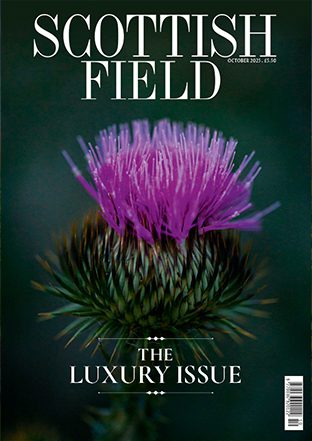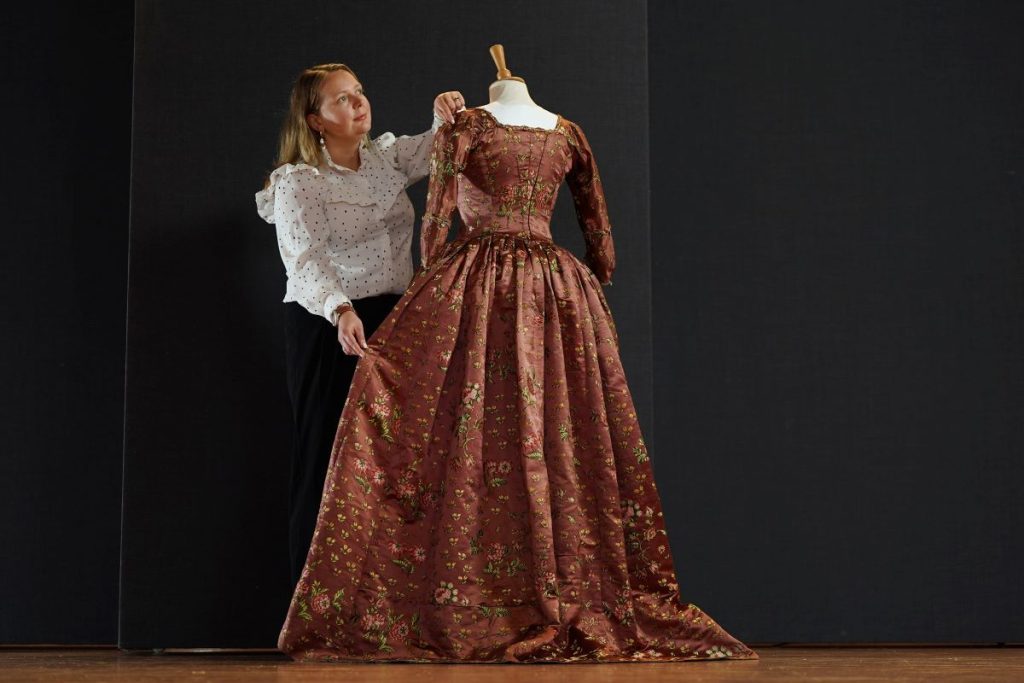
Dress worn by 18th century Scottish noblewoman linked to Jacobites goes under the hammer
A dress reputedly worn at the Palace of Holyroodhouse by an 18th century Scottish noblewoman closely allied to the Jacobite cause is going under the hammer in Edinburgh.
The dress is one of more than 80 lots belonging to the Earls of Airlie which will go under the hammer as part of Lyon & Turnbull’s two-day long Scotland Collected sale on 20 and 21 August.
The brocaded dress, estimated to fetch between £8,000 to £12,000, was worn by Lady Margaret Ogilvy, wife of David Ogilvy, 6th Earl of Airlie, when they attended a ball hosted by Prince Charles Edward Stuart, more commonly known as Bonnie Prince Charlie, at the Palace of Holyroodhouse in 1745.
Lady Margaret’s gown has been on long-term loan to the Royal Collection at the Palace of Holyrood for the last 100 years and was most recently on display in The Queen’s Lobby, next to the Great Gallery at Holyrood Palace.
Following the Jacobite victory at the Battle of Prestonpans on 21 September 1745, the Earl and Countess, who were both in their early 20s at the time, attended a ball in the Great Gallery at Holyroodhouse as guests of the prince.
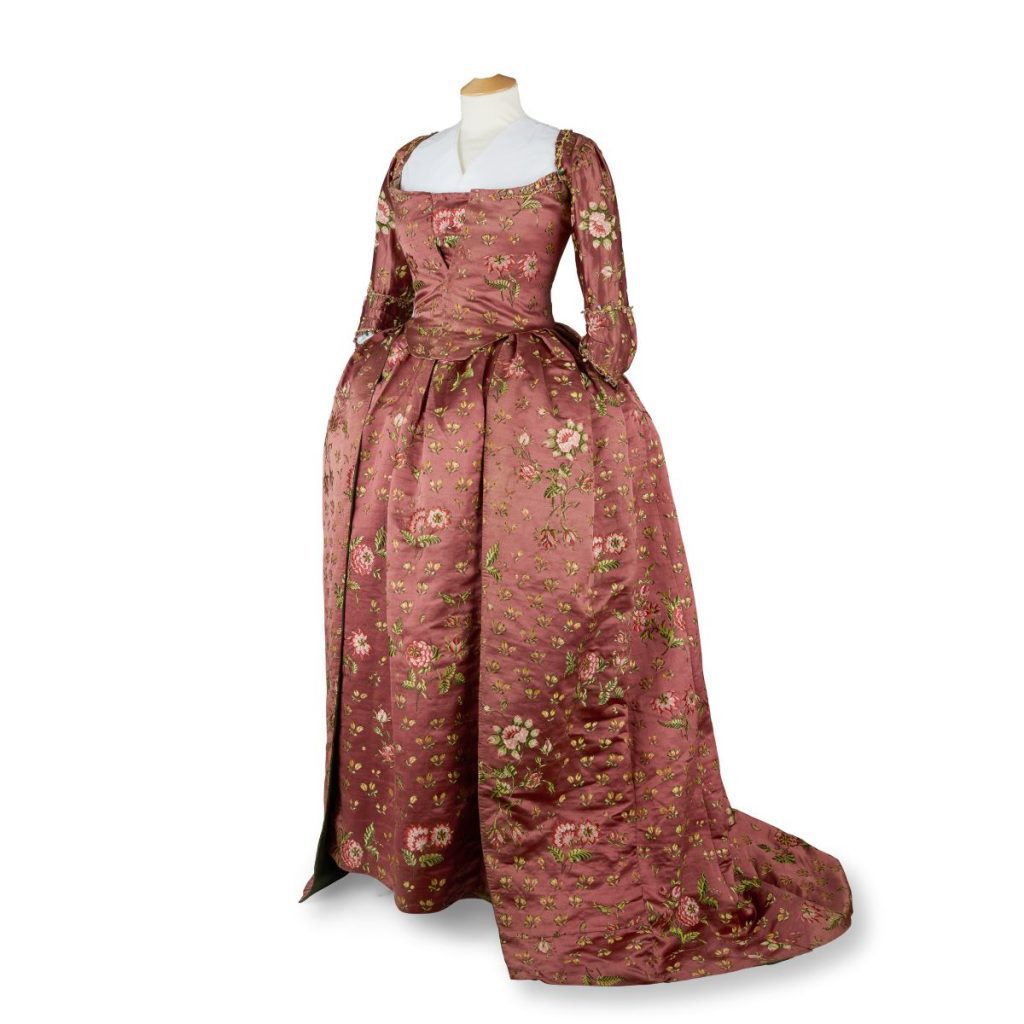
Lady Ogilvy’s dress’. Credit: Stewart Attwood.
This post-battle party, described in Sir Walter Scott’s novel Waverley, was thought to have been an artistic invention by the famous Scottish author.
But the recent discovery of a letter by Deborah Clarke, formerly senior curator at the Palace of Holyroodhouse, while researching her book, The Palace of Holyroodhouse, confirmed the ball was based on a real event.
The letter, written by the Duke of Perth at Holyroodhouse on September 30, 1745, and sent to Lord Ogilvy refers to a ‘great ball at ye palace’ on ‘Monday last…’
Lady Ogilvy went on to accompany Jacobite troops to the Battle of Culloden in April 1746. Following the battle, along with several other women, she was taken prisoner by the Duke of Cumberland, nicknamed the Butcher Cumberland. She was imprisoned in Edinburgh Castle, where she was condemned to death as a traitor.
The cunning Countess managed a daring escape in November 1746 by swapping clothes with a washerwoman. Soon after, disguised as a young gentleman, she travelled to London and ironically, soldiers mistook her for Bonnie Prince Charlie.
Her companion convinced them she was a lady of rank who was in disguise because of gambling debts and Lady Ogilvy was released after being examined by a woman. The resourceful Lady Ogilvy then journeyed to France to join her husband in exile.
‘This gown is a rare and tangible link to the 1745 Jacobite rising,’ said John Mackie, Head of Sale.
‘While much Jacobite material has been lost or romanticised, this piece stands out for its provenance and condition.
‘Objects like this shed light on the period not just politically, but personally. Lady Ogilvy’s story reveals the complexity of individual experience during the rising.’
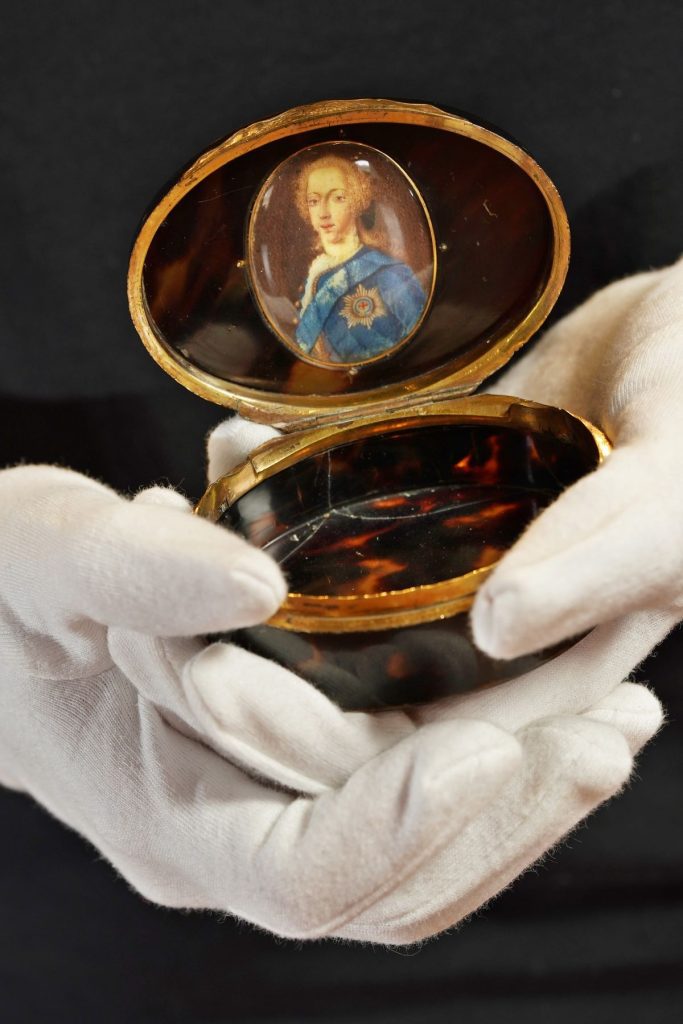
Rare Jacobite portrait snuff box from the Earls of Airlie collection. Credit: Stewatt Attwood.
In the same Lyon & Turnbull sale, a tortoiseshell snuff box, bearing a miniature portrait of Bonnie Prince Charlie in a blue velvet jacket adorned with the Order of the Garter sash and badge is another highlight.
This familiar image of the Prince is a copy of a portrait done in 1749 by Robert Strange. This highly decorative piece is estimated to sell for between £4,000 and £6,000.
Also featured is a cannonball recovered from the battlefield of Culloden. Estimated to fetch between £3,000 and £5,000, it has a silver band engraved with the words ‘Ogilvy Culloden 16 April 1746’.
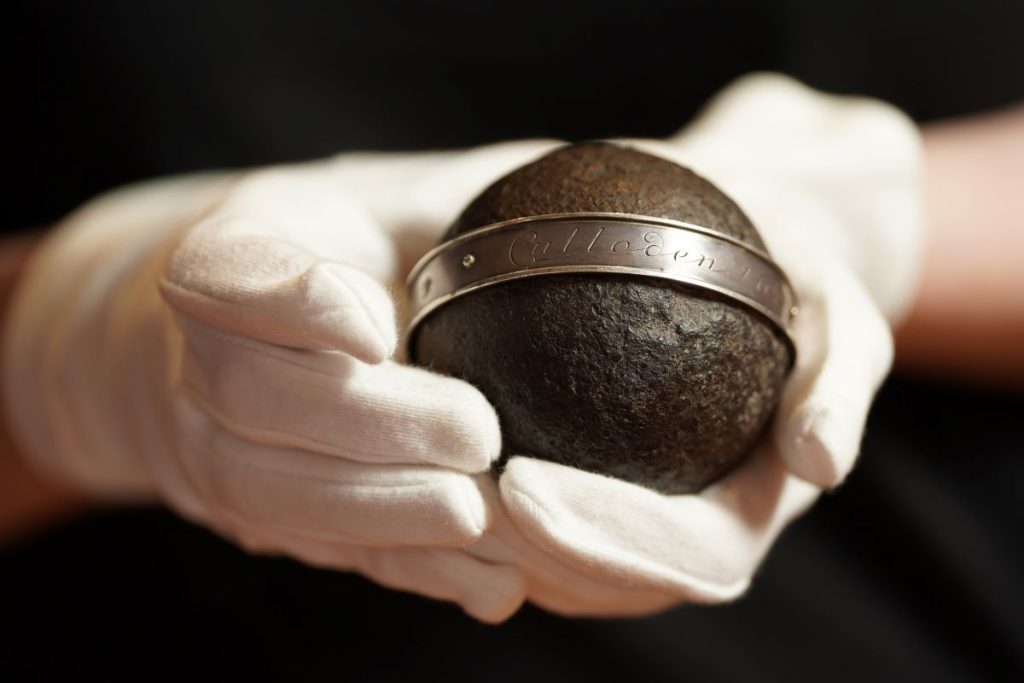
An important cannonball retrieved from the Battlefield of Culloden. Credit: Stewart Attwood.
‘Alongside the gown, the Airlie collection includes battlefield relics and personal items that offer a fascinating glimpse into life in eighteenth century Scotland,’ John added.
‘Elsewhere in the sale we are offering a major group of Scottish arms and armour, together with Wemyss Ware, silver, jewellery, and other works of art.’
Read more News stories here.
Subscribe to read the latest issue of Scottish Field.
TAGS

